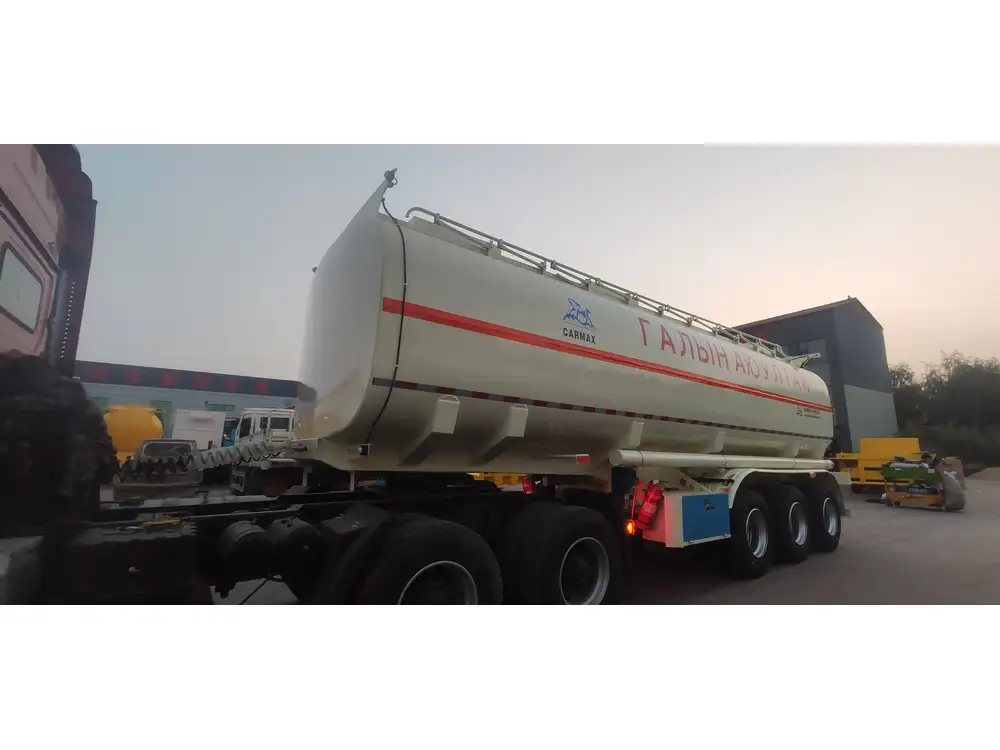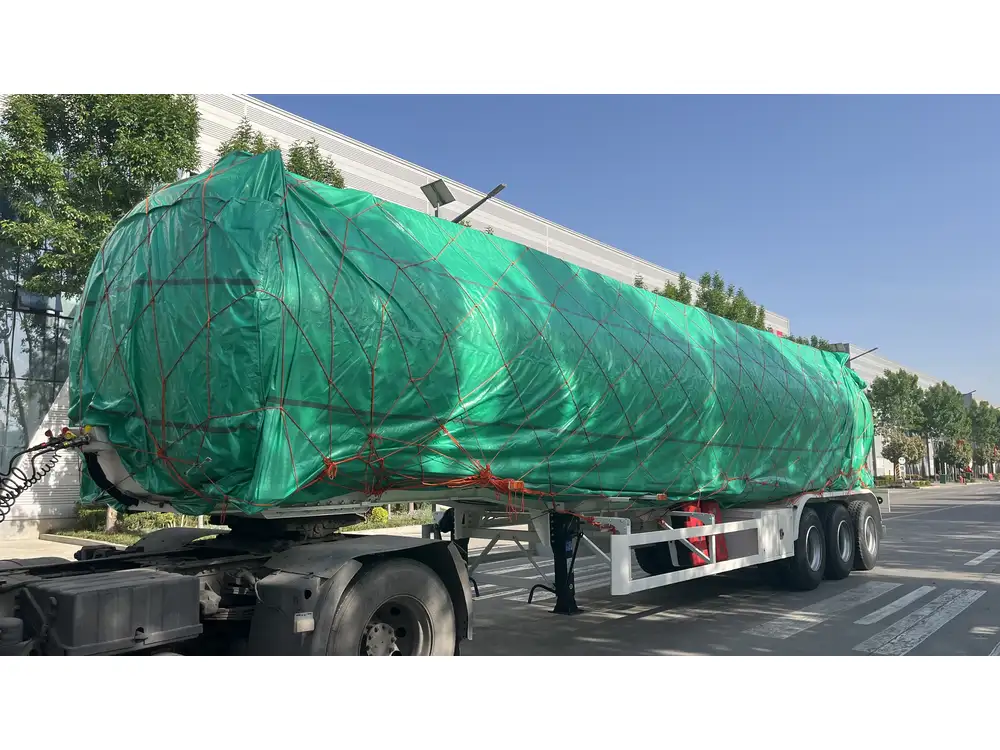Introduction to Legal Height Regulations
When it comes to transportation, especially with semi-trailers, understanding the legal height regulations is crucial for compliance, safety, and efficiency. Specific height constraints are set by federal, state, and local regulations to ensure safe roadway operations. In this detailed exploration, we will dissect the elements surrounding semi-trailer height limits, the implications of violations, and the potential consequences of non-compliance.
Federal vs. State Regulations

National Standards
In the United States, the federal government has laid down specific guidelines regarding freight vehicle heights. According to the Federal Highway Administration (FHWA), the maximum height allowable for vehicles, including semi-trailers and their loads, is 13 feet 6 inches (approximately 4.1 meters). This regulation applies to most federal roadways but does not supersede state or local regulations, which may impose stricter limits.
State Legislation
Variations exist at the state level, where individual states can implement specific height restrictions based on local roadway conditions. For instance:
| State | Maximum Height | Note |
|---|---|---|
| California | 14 feet | Common exceptions for agricultural vehicles |
| Texas | 14 feet | Generally accommodates larger loads |
| New York | 13.5 feet | Strict enforcement in urban areas |
| Florida | 13 feet 6 inches | Standard height limit |
Local Ordinances
In addition to state regulations, various towns and municipalities can enforce their own height restrictions, often relating to bridge heights or local infrastructure. It’s essential to check local guidelines when planning routes to prevent unexpected encounters with low-hanging obstacles.

Consequences of Exceeding Height Limits
Fines and Penalties
Traveling with a semi-trailer that exceeds legal height limits can result in severe repercussions, including:
- Fines: Ranges from $100 to several thousand dollars, depending on severity and state regulations.
- Delays: Traffic stops for height checks may lead to operational delays, affecting delivery schedules.
- Court Appearance: Serious violations may necessitate court appearances, leading to increased costs in legal fees.
Safety Hazards
Exceeding the legal height can also pose significant risks on the road:
- Collision Risk: Higher vehicles are prone to collisions with overpasses and bridges, leading to catastrophic accidents.
- Increased Center of Gravity: Altered height impacts vehicle stability, increasing the likelihood of rollovers.
- Load Integrity: Insecure loads due to improper height can fall onto the roadway, endangering other drivers.

Factors Influencing Legal Height Compliance
Trailer Design and Types
The type of trailer affects its height. Standard semi-trailers, lowboys, and step-decks each have defined heights that must be adhered to. Some common types include:
| Trailer Type | Typical Height | Usage |
|---|---|---|
| Standard Van | 13 feet 6 inches | General freight transport |
| Flatbed | 13 feet 6 inches | Versatile use but should consider load |
| Lowboy | 12 feet | Heavy equipment transport |
Cargo Considerations
Different types of cargo can impact the permissible height of the semi-trailer. When transporting certain goods, especially oversized items, obtaining special permits may be necessary. Adapting the load to ensure compliance with height regulations is vital.

Season and Weather Conditions
Weather conditions may demand adjustments to height compliance. For instance, snow accumulation can increase the height of a load temporarily. Seasonal restrictions can vary, particularly in states prone to extreme weather, impacting overall transport planning.
Strategies for Height Compliance
Load Height Measurement
Regular and accurate measurement of the height of both the semi-trailer and its load is crucial. Here are steps to ensure compliance:
- Use a Reliable Measuring Tool: Utilize laser measuring devices or traditional tape measures.
- Measure During Loading: Measure the trailer height once loading is completed to ensure compliance before hitting the road.
- Account for Load Movement: Be aware that load settling can occur during transit, necessitating additional checks.

Consult Regulatory Resources
Providing comprehensive training and resources for drivers and logistics managers is essential. Having easy access to the following can improve compliance:
- State DOT Guidelines: Familiarize staff with state-specific height restrictions.
- Route Planning Tools: Leverage GPS and mapping software designed for freight transport, highlighting height-restricted routes.
- Regular Training Programs: Establish ongoing education programs to keep all personnel updated on regulations.
How to Handle Height Violation Situations
Emergency Protocols
In the event of encountering sudden height restrictions, implementing emergency protocols can mitigate risks and penalties:
- Immediate Stop: Pull over safely to assess the situation.
- Consult with Dispatch: Contact your logistics team to report and seek alternative routes.
- Document Everything: Make meticulous notes on the incident for potential legal purposes.

Adjusts Loads On-Site
If feasible, adjust your load at the site. Utilizing cranes or other equipment to alter positions or remove certain cargo may provide a solution to height issues.
Preparing for Legal Challenges
If penalized for exceeding height regulations, taking steps to prepare for legal challenges may be wise:
- Consult a Legal Advisor: Enlist professionals with experience in transportation laws.
- Gather Evidence: Maintain detailed records of measurements and any permits secured.
- Negotiate Penalties: Explore opportunities to mitigate fines or arrange payment plans.
The Importance of Staying Informed

Regular Updates on Regulations
Due to the dynamic nature of transportation regulations, staying informed on updates is essential. Engaging in industry forums, subscribing to relevant newsletters, and following local DOT news can enhance compliance and operational efficiencies.
Engage with Professional Associations
Joining industry organizations dedicated to freight transport can provide valuable resources, training, and advocacy. Such associations often hold workshops and seminars to cover important regulatory updates, ensuring members are equipped to handle compliance issues effectively.
Conclusion
Understanding the legal height requirements for semi-trailers is not merely a matter of compliance but is integral to the safety and operational efficiency of your business. By fostering a culture of knowledge and vigilance around height regulations, utilizing proper equipment and resources, and staying updated with changes in the law, transportation firms can navigate these complexities successfully. This proactive approach enhances safety, minimizes costs associated with violations, and ensures seamless transportation operations, ultimately leading to improved service delivery and business reputation.
Ensuring your semi-trailers are within legal height limits is a comprehensive task that involves understanding regulations at multiple levels—federal, state, and local. Proactive measures, ongoing training, and a culture of compliance can significantly ease the burdens of operating in this highly regulated field.



